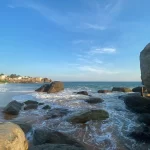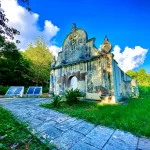Padmanabhapuram Palace stands as a grand testament to the secular architecture of the 16th century, intricately woven with the rich history of the Venad Kingdom. It was constructed under the rule of Ravi Varma Kulasekhara. This splendid palace, situated in Kalkulam Taluk of the Kanyakumari district in Tamil Nadu, India, was once the vibrant capital of the Venad Kingdom. Notably, Padmanabhapuram Palace is located at a distance of 12.7 km from Nagercoil and 64.5 km from Thiruvananthapuram. Eventually, the capital was relocated to Thiruvananthapuram, marking a significant transition in the historical narrative.

Throughout history, numerous empires have risen to power, yet only a handful have endured the test of time, each preserving within its walls a majestic narrative waiting to be unveiled. Among these remarkable structures is the Padmanabhapuram Palace. The Venad Kingdom, a potent realm of the southern territories, boasts a legacy that commands attention. To demarcate its borders from the Pandya Kingdom, an array of fortifications was meticulously constructed along its boundaries. One notable exemplar of these protective measures is the Padmanabhapuram Fort, distinguished by its distinctive construction primarily using wood.

The fort encompasses the village of Kalkulam, safeguarding an expansive 185 acres, with the palace occupying 6.5 acres within this expanse. Constructed in alignment with Vastu Shastra, the traditional ancient Indian science of architecture, the palace stands as a testament to meticulous planning. Nestled in the foothills of the Veli Mountain within the Western Ghats, the fort’s strategic positioning capitalizes on the natural protection afforded by this mountainous terrain. This positioning not only showcases the fort’s military acumen but also makes it impervious to invasion from that particular direction.
The Clock Tower
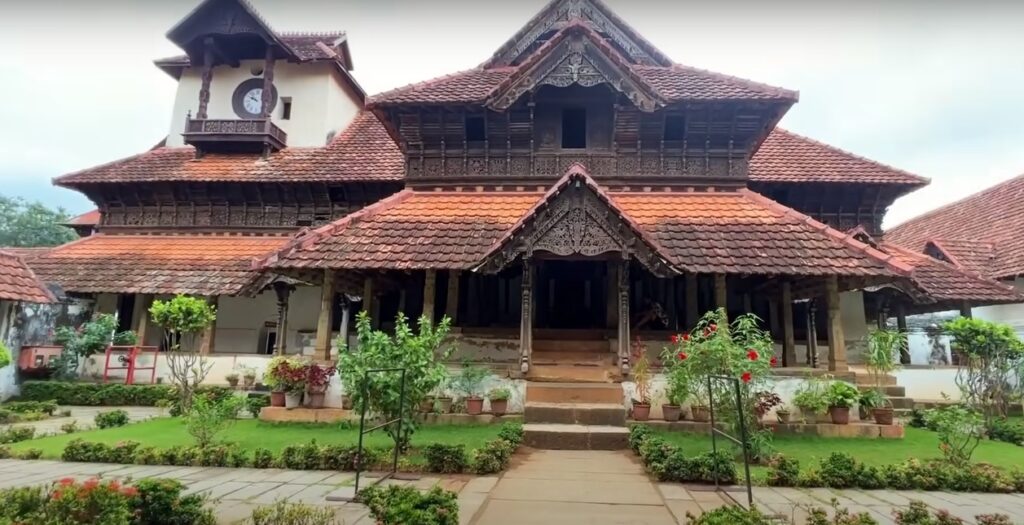
The clock tower is situated within the Poomukhamalika structure, with the clock itself boasting a history of over 200 years. According to oral tradition, a local blacksmith is said to have journeyed abroad and acquired the knowledge of crafting clocks from Spanish priests. However, this historical account lacks concrete evidence. The clock’s operation is governed by a substantial pendulum, and its mechanism is based on weights and pulleys.
Council Chamber
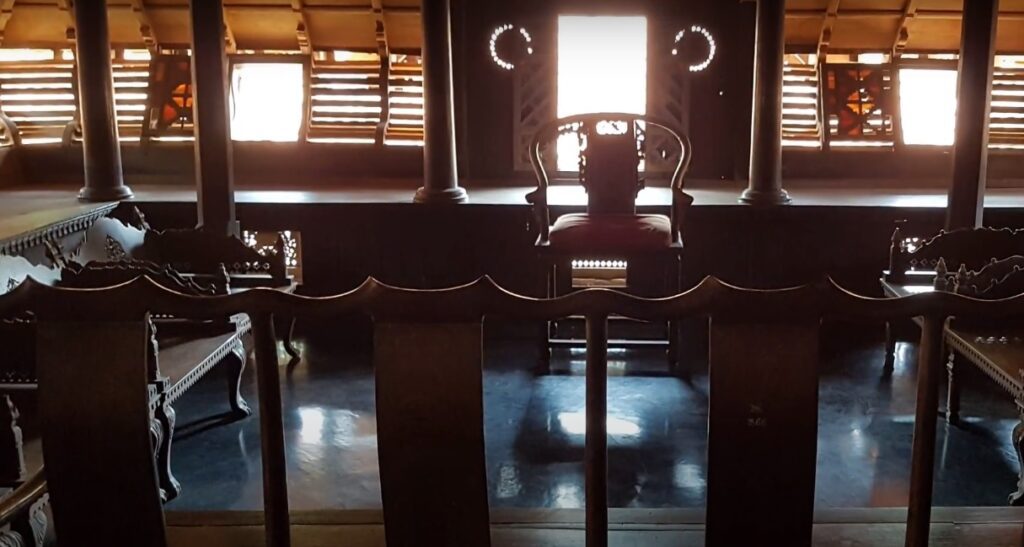
The Council Chamber at Padmanabhapuram Palace holds a distinctive place within its premises. This chamber played a pivotal role as a hub for crucial deliberations and discussions. It was here that significant decisions were formulated and important matters were debated among the ruling figures of that era. The architectural significance and historical relevance of the Council Chamber underline its importance as a crucial element of the palace. It stands as a testament to the administrative and governance practices of its time.
Oottupura

The inclusion of the Oottupura within Padmanabhapuram Palace adds an additional dimension to its historical importance, shedding light on the palace’s way of life, culinary customs, and the approach it took to attend to both its residents and guests. This impressive structure was purpose-built to manage dining activities within the palace complex and can effectively provide food for up to 2000 individuals concurrently. The building comprises two stories, housing two distinct dining halls. Notably, it is believed that free meals are generously offered year-round within these dining halls.
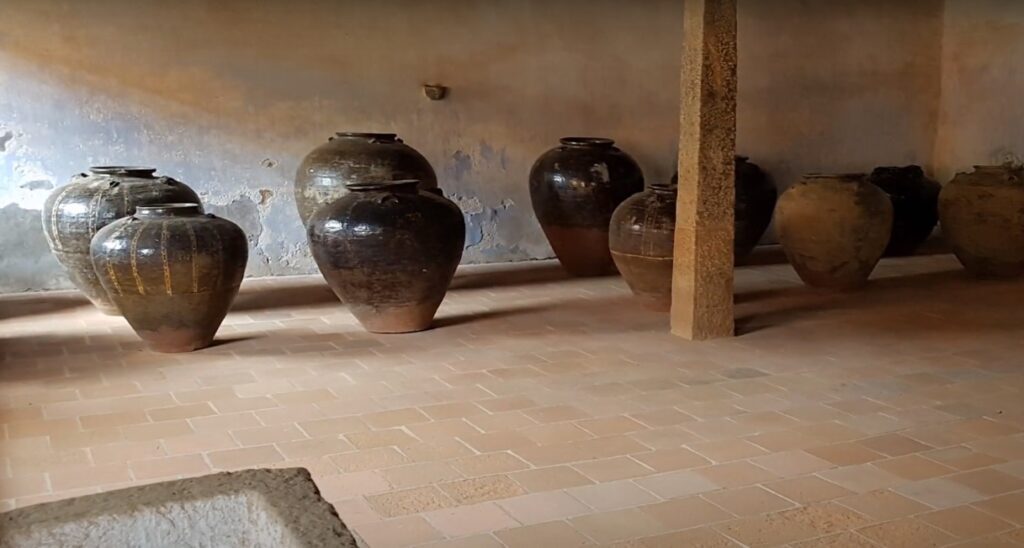
Upon exiting the dining hall, a compact exhibition room awaits, showcasing a collection of antiquities unearthed from the vicinity of Padmanabhapuram Palace during official excavations conducted by the government.
Thai Kottaram

Thaikottaram stands as one of the oldest structures within Padmanabhapuram Palace, dating back to the 15th century. Constructed using durable jackfruit wood, the intricate wooden carvings adorning it boast a distinctive and captivating design, unlike anything you might have encountered before.
Within the palace lies a hidden underground passageway, strategically linking to distant sites. Crafted to ensure the ruler’s safe passage during wartime, this covert route remains off-limits to public exploration, shrouded in secrecy.
Uppirikka Malika
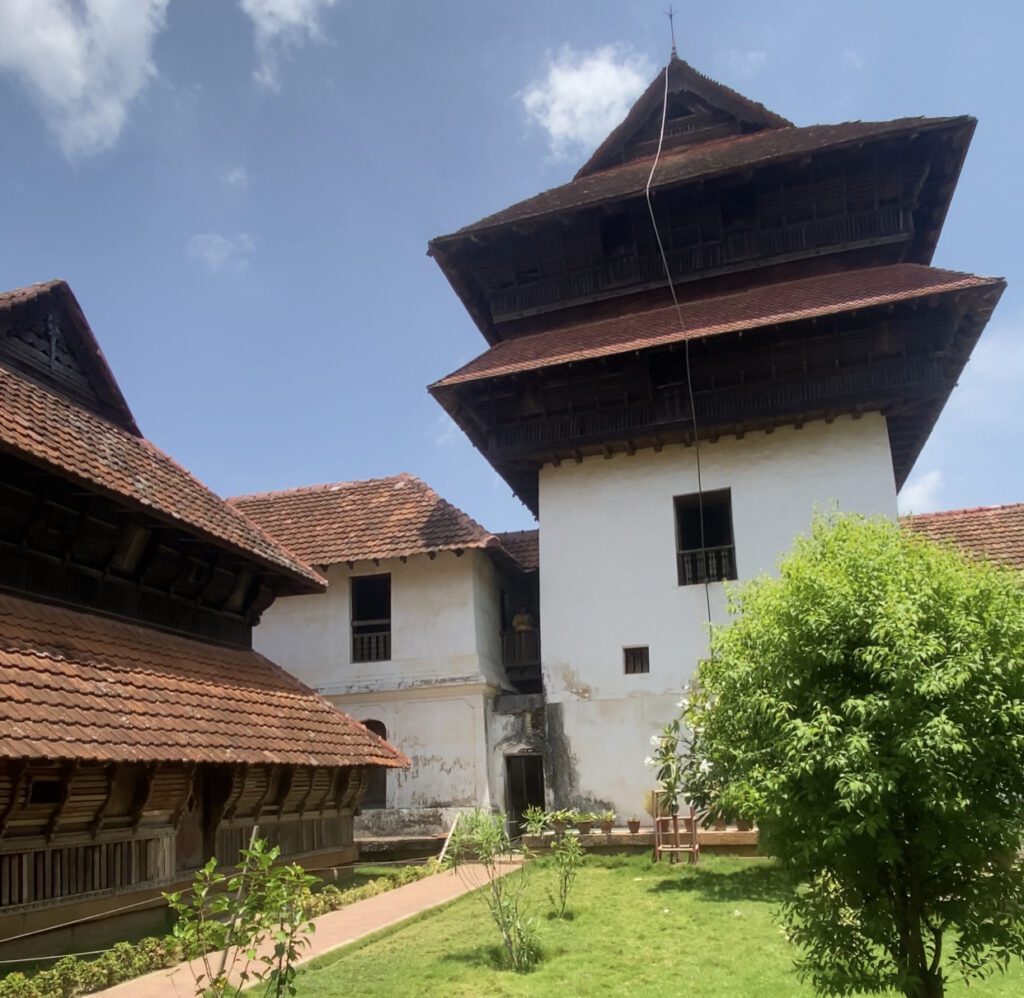
The multi-storied Uppirikka Malika, built in 1745 A.D., embodies themes of power, wealth, and spiritual realization. Its unique architectural design sets it apart from the other structures within the palace complex. Another captivating feature of this palace is its sleek, mirror-like black floor, adding to its overall appeal.

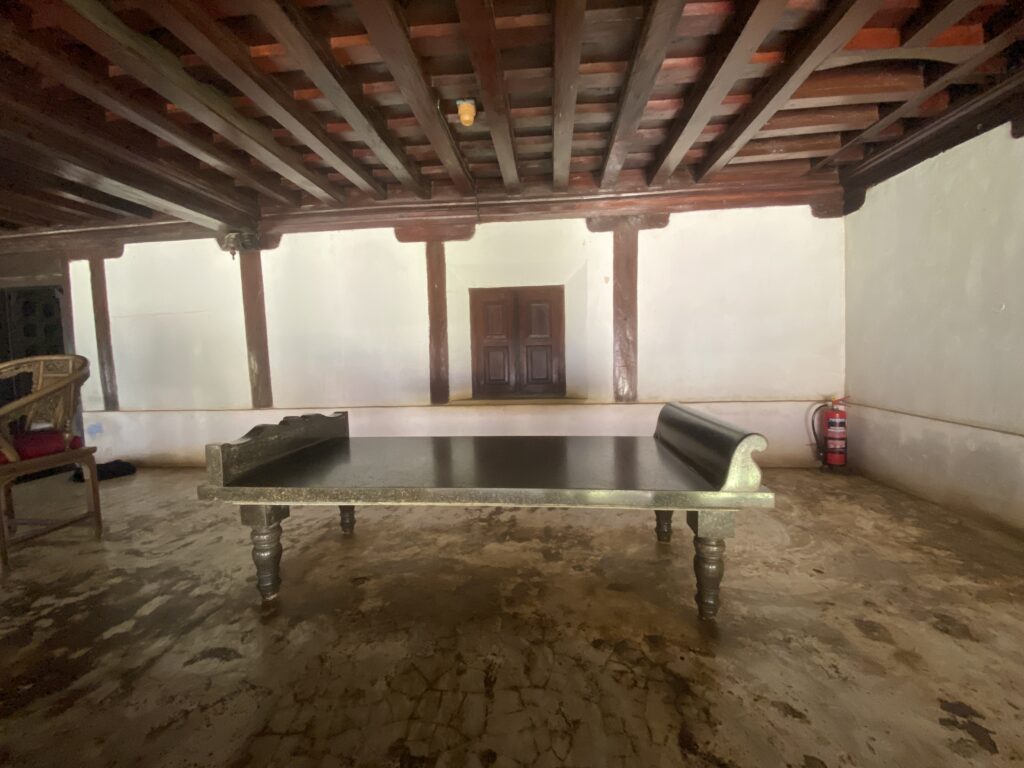


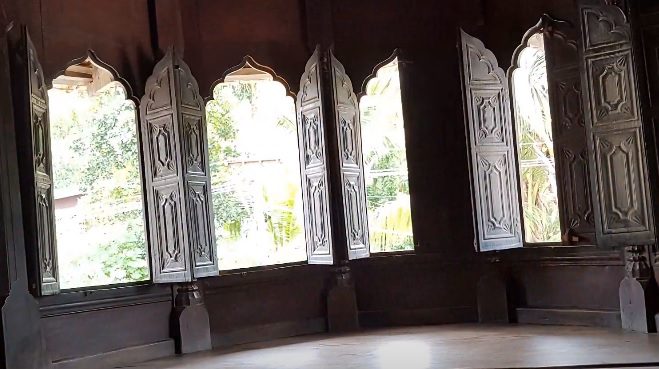


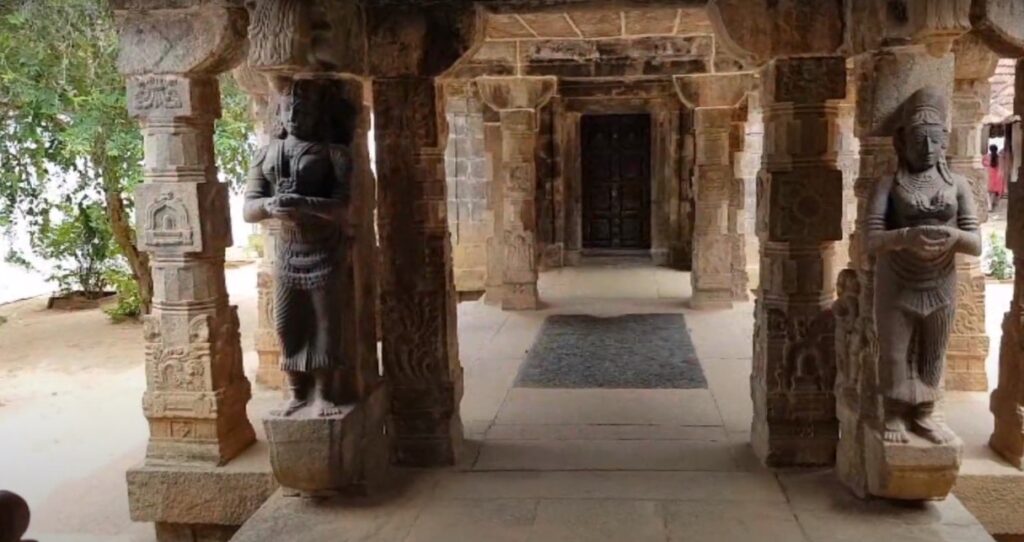

Nearby Airport
Thiruvananthapuram International Airport (TRV) stands as the closest airport to Padmanabhapuram Palace.
Nearby Railway stations
The closest railway stations to Padmanabhapuram Palace are as follows: Eraniel (ERL)- 4.5 Km, Palliyadi (PYD) – 7.5 km, Kuzhithurai (KZT) – 13 km, Nagercoil Junction (NCJ) – 15 km, and Parassala (PASA) – 21 km.
Whether you’re using public transport or your own vehicle, reaching Padmanabhapuram Palace is convenient due to its proximity to Thuckalay. Thuckalay serves as a connecting point between the significant cities of Thiruvananthapuram and Kanyakumari.
If you are traveling from a distant location to visit the padmanabhapuram palace, there are various hotels available in close proximity for accommodation. These options range from budget-friendly hotels to more luxurious ones, as well as resorts. Feel free to book a place that suits your requirements and preferences.
You can explore Padmanabhapuram Palace between 9:00 AM and 12:30 PM, and then again from 2:00 PM to 4:30 PM, except on Mondays, as they are designated as non-operational days. Additionally, the palace remains closed on national holidays.
Nearest Tourist Places
Udayagiri Fort- 3.1 Km.
Mathur Aqueduct- 13 Km.
Chitharal Rock Jain Temple- 15.2 Km.
Thirparappu waterfalls- 21 Km.
Muttom Beach- 15.9 Km.
Lemur Beach- 18.9 Km.
Vattakottai Beach- 33.3 Km.
Vattakottai Fort- 33.3 Km.
Kanyakumari Beach- 33.7 Km.



